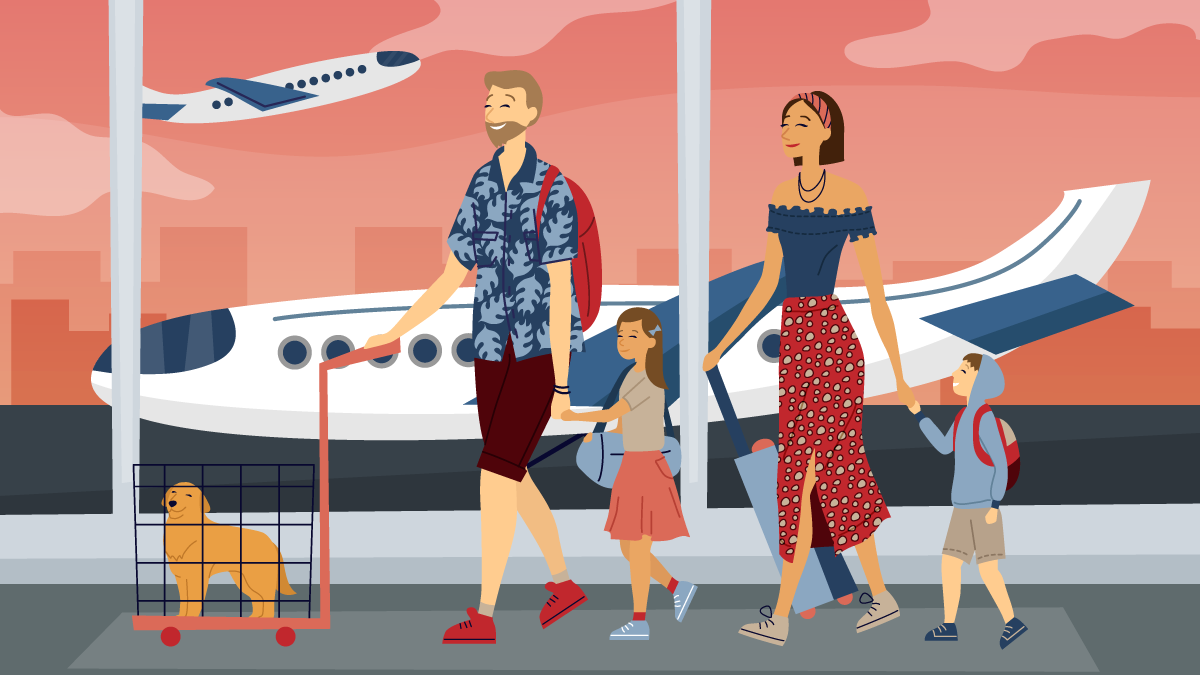
When your pup’s not chewing on their leash or chasing squirrels, they may be begging for a trip. While taking dogs with you on planes is possible and even legal in most cases—provided that they meet certain requirements—it will definitely add some work and expense onto your travel plans, so it’s important that you’re well-informed before heading down this path.
If this sounds like something that piques your curiosity, read on for seven essential things to know about flying with your dog.
Make Sure Your Dog Is Allowed On The Plane With You
While most domesticated animals are allowed to fly with their humans, some are not.
If your dog falls under any of the following categories, they are most likely not permitted on board with you under any circumstances:
- Snub-nosed dogs (like pugs, bulldogs, etc.) due to respiratory difficulties that may be exacerbated by changes in air pressure during the flight.
- Breeds with short legs or long bodies—many of which are already prone to respiratory issues at lower altitudes—are also typically banned from flying lest they be crushed during takeoff or landing.
- Toy dog breeds, such as Yorkshire terriers and Chihuahuas, are often not allowed on planes due to the high risk of them being lost or misplaced during flight.
- Any dogs that cause disruptions onboard flights—no matter what their breed—are typically banned from flying with you as well.
Before booking your flight, be sure to check directly with the airline about size and breed restrictions; they may make exceptions depending on how well-behaved your pup is and how much space they will take up (or if they can even fit under the seat in front of you).
Get Everything In Order Before The Day Of Your Flight – And Have A Backup Plan
Flying with your dog is not something you want to be caught off guard for—especially if a last-minute flight is required, or you’ll have to spend a night at a hotel en route. All dog lovers know that when it comes to dogs, no matter how well-prepared you think you are, it’s always good to have a backup plan in place just in case an issue arises.
There are plenty of items that will help make the journey as easy as possible for everyone involved.
A carrier that is approved by the airline (and large enough for them to stand and turn around inside comfortably) – check with the airline first before purchasing anything; they may already supply one free of charge.
A favorite toy – even something as simple as an old tennis ball will help calm their nerves. Many dogs get over-anxious while flying, so make sure to bring plenty of these along in case your pup starts getting antsy.
Prepare Your Dog For The Journey Ahead
Depending on your dog’s temperament, they may need a bit of extra coaching before boarding the plane—especially if this will be their first flight. If you plan ahead and do a little training with them beforehand, the flight will likely go much smoother for everyone involved.
Bring A Supply Of Food And Water For The Flight
Your dog will need to eat and drink at some point before or during the flight, so be sure to bring enough of their favorite snacks with you. Depending on how long your journey is, it’s also a good idea to have things like ice cubes ready for them should they get thirsty.
Take As Few Breaks As Possible On The Plane
Since your dog will take up a lot of room in the cabin, they might be required to spend most or all of their time in their carrier during takeoff and landing—and that’s not much fun for them (or you). So do what you can to keep them occupied while you still can (and take advantage of that pre-takeoff bathroom break).
Microchip, Don’t Tag Your Pet
When you travel, especially internationally, identification tags are often lost or misplaced. Microchipping your dog is a much more permanent form of veterinary identification—as well as an ideal way to make sure that you’re reunited with your pet should they get lost (instead of them ending up at the shelter). If you’re not already microchipped, this is something that every dog owner should seriously consider.
Be Around Your Dog When You Arrive At Your Destination
You may end up having to spend the night in a hotel at some point during your travels, but do everything in your power to sleep near or with your pup that night. This will help them get acclimated to their new surroundings and feel less anxious about the journey they’ve just been through—so this is definitely something to keep in mind when planning your itinerary.
Just because you choose to fly with your dog does not mean that they get a free pass on all of the usual rules and protocols. Be prepared, flexible, and patient–and always remain vigilant—and flying the friendly skies with your pup will be an enjoyable experience for everyone involved.




